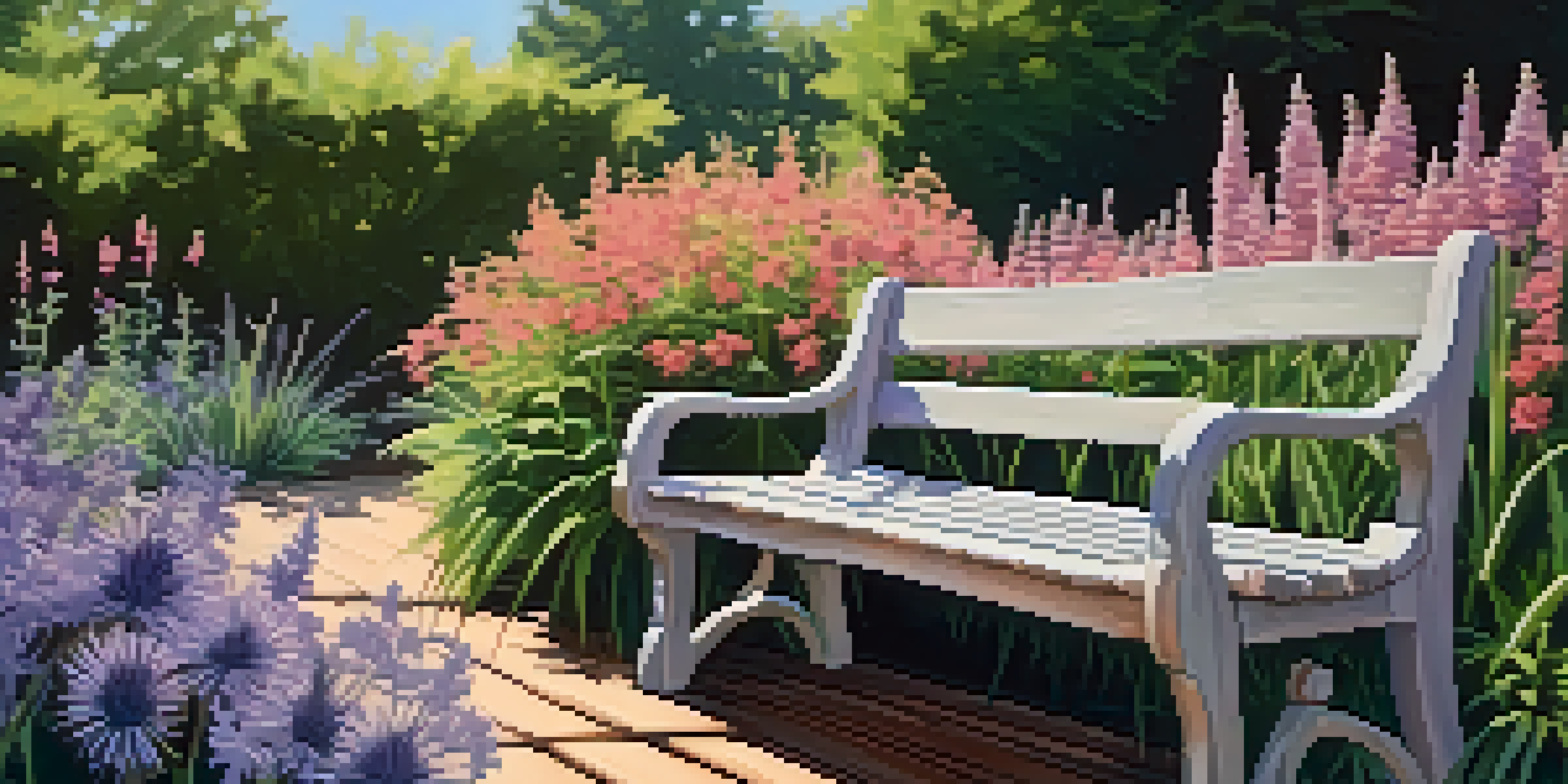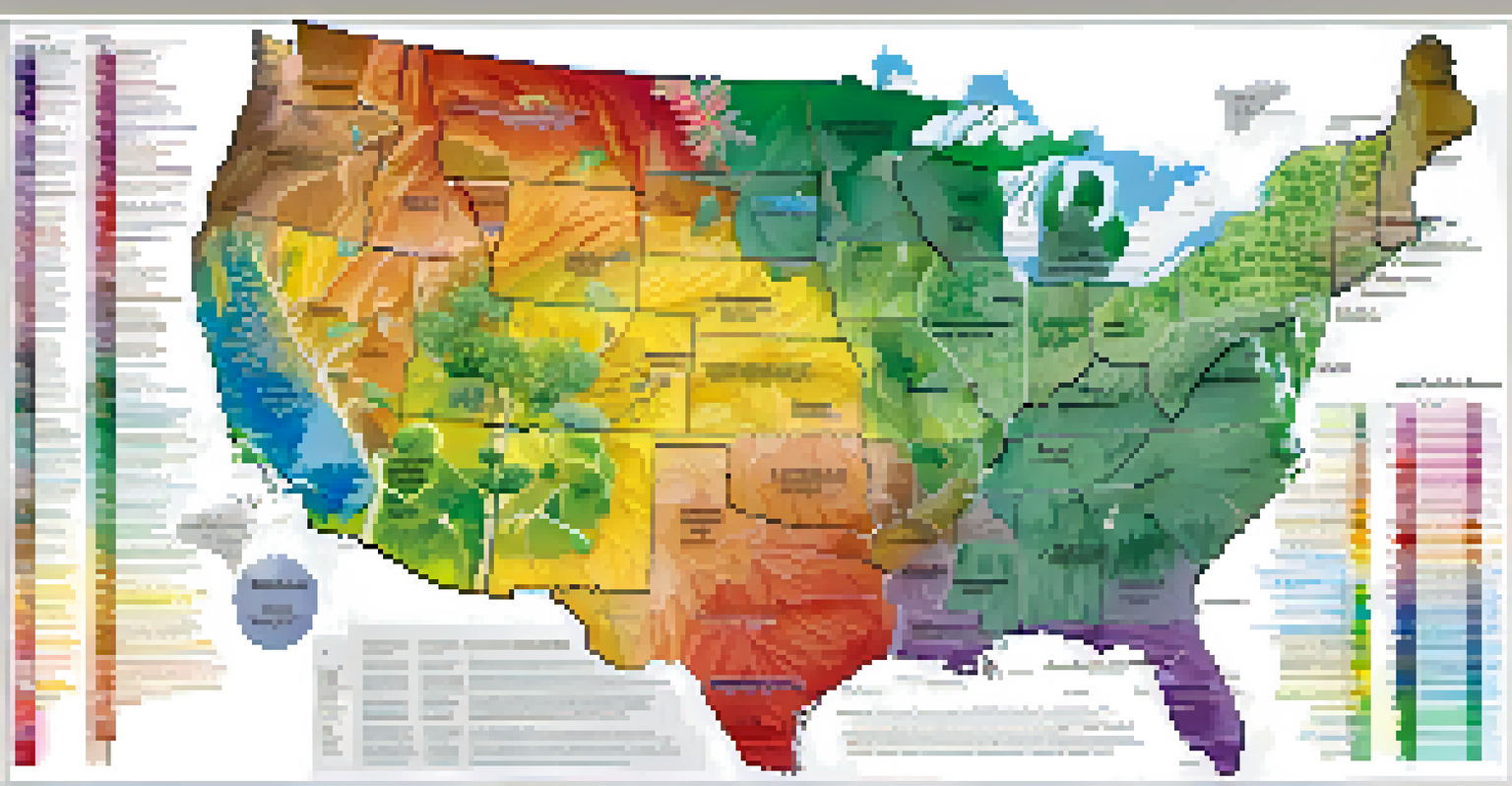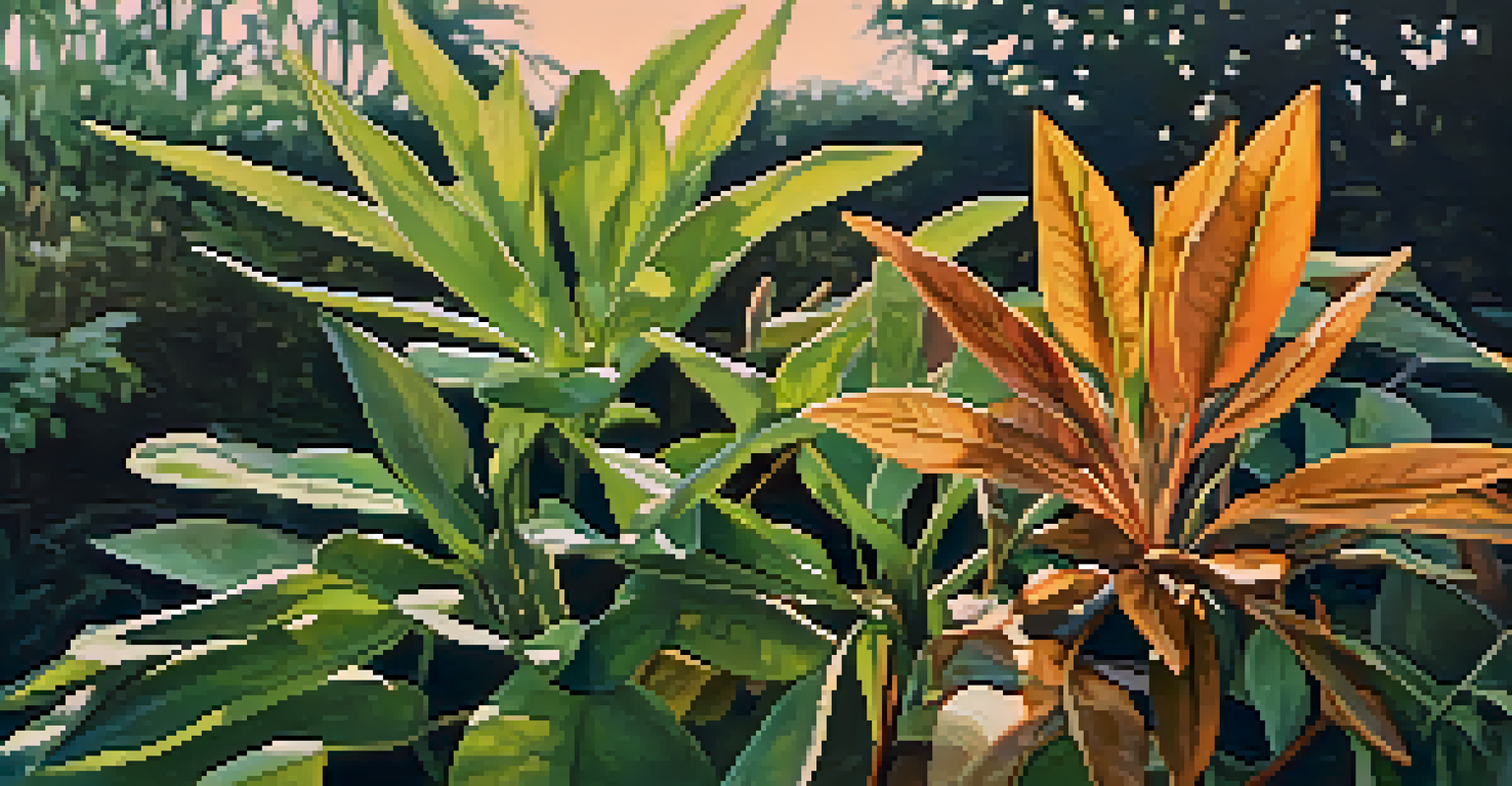Understanding Plant Hardiness Zones: Choose the Right Plants

What Are Plant Hardiness Zones and Why Do They Matter?
Plant hardiness zones are geographical areas defined by climate conditions, particularly temperature extremes. These zones help gardeners and landscapers determine which plants can survive in their local environment. Understanding these zones is crucial for successful gardening, as it directly impacts plant health and growth.
Gardening is a way of showing that you believe in tomorrow.
Each zone is assigned a number, ranging from 1 to 13, with sub-zones indicating temperature ranges. For example, Zone 5 can have winter lows between -20°F to -10°F. This information allows gardeners to choose plants that are well-suited for their specific location, preventing the frustration of planting something that simply won’t thrive.
By knowing your hardiness zone, you can make informed choices about what to plant, ensuring your garden is vibrant and sustainable. This knowledge can save you time, money, and effort, allowing you to enjoy gardening without the worry of plant failure due to climate mismatches.
How to Determine Your Plant Hardiness Zone
Finding your plant hardiness zone is easier than you might think! The USDA Plant Hardiness Zone Map is a comprehensive resource that divides the United States into distinct zones based on average annual minimum winter temperatures. You can simply look up your zip code online to find out which zone you're in.

Additionally, local gardening centers often have information specific to your area. They usually provide a wealth of knowledge about microclimates—small areas where the climate might differ from the surrounding region. For instance, a sunny spot on a south-facing slope may be warmer than a shaded area nearby, allowing for different plant choices.
Understanding Hardiness Zones
Plant hardiness zones help gardeners select plants that can thrive in their local climate conditions.
Remember, while hardiness zones are a great starting point, they don’t tell the whole story. Factors like soil type, moisture levels, and sunlight exposure also play a crucial role in determining what plants will thrive in your garden.
The Importance of Knowing Your Zone Before Planting
Knowing your hardiness zone can mean the difference between a flourishing garden and a failed attempt. Plants that are not suited for your zone may struggle to survive the winter, leading to wasted resources and disappointment. For instance, a tropical plant might look beautiful in a store but could perish in colder climates.
The best time to plant a tree was twenty years ago. The second best time is now.
Additionally, understanding your zone helps you select plants that will not only survive but also thrive in your specific environment. It ensures that you choose varieties that are adapted to your region’s temperature extremes, thereby promoting healthy growth and longevity.
Moreover, planting within your hardiness zone can enhance biodiversity in your garden. Choosing native plants suited to your area can attract local wildlife, enriching your garden’s ecosystem and contributing to environmental sustainability.
Choosing the Right Plants for Your Hardiness Zone
Once you know your hardiness zone, the next step is selecting plants that fit within it. Look for plant labels that indicate their hardiness zone, which can help streamline your choices. Many online resources also provide lists of plants tailored to specific zones, making it easier to pick suitable options.
Consider including a mix of perennials, annuals, shrubs, and trees that are well-suited for your zone. For example, if you're in Zone 6, you might choose lavender, echinacea, or even certain types of hydrangeas that thrive in your climate. This variety not only adds visual interest but also supports a healthy ecosystem.
Importance of Microclimates
Microclimates can significantly affect plant choices, allowing for a broader range of options based on localized conditions.
Don’t forget to think about seasonal changes! Selecting a range of plants that bloom at different times can keep your garden looking vibrant throughout the year, so you can enjoy its beauty come spring, summer, and fall.
Microclimates: Understanding Their Impact on Plant Choices
Microclimates are small, localized areas that can differ from the surrounding climate, affecting plant growth. For instance, a garden located along a south-facing wall may receive more sunlight and warmth, allowing for the cultivation of plants that typically wouldn’t thrive in the broader zone. Understanding these nuances can enhance your gardening success.
When assessing your garden, look for factors like shade from trees, wind exposure, and proximity to heat-retaining structures. These elements can create unique conditions that might allow for a broader range of plant selections. For example, you could grow heat-loving plants in a sheltered spot that would otherwise be too cold for them.
By paying attention to these microclimates, you can tailor your plant selections even more precisely, maximizing the potential of your garden. This level of attention can lead to a lush, diverse, and thriving outdoor space.
Common Mistakes to Avoid When Selecting Plants
One common mistake gardeners make is ignoring hardiness zone recommendations. Many may fall in love with a plant only to discover it isn't suited for their climate. It's essential to resist the temptation to plant something that looks beautiful but isn't built for your environment, as it often leads to frustration.
Another pitfall is relying solely on the planting zone without considering other factors, like soil type or sun exposure. A plant that thrives in your zone might not do well if your soil is too sandy or too compacted. Always evaluate the overall environment you’re working with to ensure success.
Avoiding Common Planting Mistakes
Ignoring hardiness zone recommendations and other environmental factors can lead to gardening frustration and plant failure.
Lastly, don’t forget to consider the mature size of the plants you choose. Planting a small seedling that will eventually grow into a large tree right next to delicate flowers can lead to competition for nutrients and sunlight. To avoid overcrowding, always plan for the future growth of your plants.
Final Thoughts: Cultivating a Successful Garden
Understanding plant hardiness zones is the first step toward cultivating a successful garden. By knowing your zone and selecting the right plants, you can create a thriving environment that brings joy and beauty to your outdoor space. Remember, gardening is both an art and a science, requiring careful planning and consideration.
As you embark on your gardening journey, stay curious and open to learning. Experimenting with different plants and observing their performance in your garden will help you become more adept at choosing the right ones. Each season offers new opportunities to refine your choices and enhance your garden.

Ultimately, the goal is to create a beautiful, sustainable space that you can enjoy for years to come. With a little knowledge and thoughtful planning, you’ll be well on your way to gardening success.